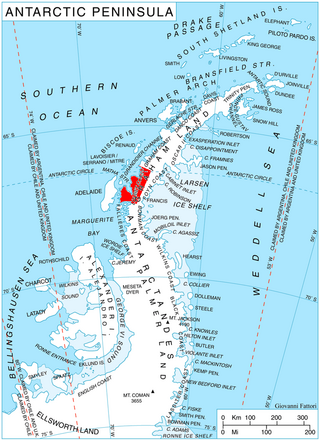See also
- Gostilya Point, a location on Antarctica
Gostilya may refer to:
Evros may refer to:
Letnica may refer to:

Sandanski is a town and a recreation center in southwestern Bulgaria, part of Blagoevgrad Province. Named after the Macedonian Bulgarian revolutionary Yane Sandanski, it is situated in Sandanski–Petrich Valley at the foot of Pirin Mountains, along the banks of Sandanska Bistritsa River. Sandanski is about 20 km away from the Bulgaria-Greece border and 100 km away from the Aegean Sea.
Arda or ARDA may refer to:
Kamenica is a Slavic toponym that may refer to:
Arda River may refer to:
Kamenitsa is the name of several locations in Bulgaria:
Devils River is the name of several rivers. These include:
Strumeshnitsa may refer to:
Sušica or Sushitsa may refer to several places:
Ostrovo may refer to:
Gostilya is a village in central northern Bulgaria, located in Dolna Mitropoliya municipality, Pleven Province. It was founded in 1890 by 133 families of Roman Catholic Banat Bulgarians from Stár Bišnov and Ivanovo in what was then Austria-Hungary. It was later also settled by Banat Swabians (see Germans in Bulgaria), Eastern Orthodox Bulgarians and Aromanians from Macedonia, as well as Banat Bulgarians from other villages. A school was built in 1893, the Roman Catholic church was opened in 1904 and the local community centre (chitalishte) was founded in 1926. Gostilya was once the poorest of the Banat Bulgarian villages in Bulgaria because it had a limited common. In 1939, the local Roman Catholic community numbered 1,091. 33 Banat Swabians left Gostilya in 1943 due to Nazi Germany's Heim ins Reich policy.
Archar may refer to:
Kamchia or Kamchiya may refer to:
Byala Reka may refer to:
Iskar may refer to:
Karaağaç, also spelled Qaraağac or Karaagach or Qarağac, is a Turkic place name and may refer to:

Kudelin Point is the point on the northeast side of the entrance to Tlachene Cove on Loubet Coast, Antarctic Peninsula. The point is formed by an offshoot of Gaydari Peak and was shaped as a result of the retreat of Hopkins Glacier during the last two decades of the 20th century. The point is named after the settlement of Kudelin in Northwestern Bulgaria.

Gostilya Point is the point on the southwest side of the entrance to Tlachene Cove on Loubet Coast, Antarctic Peninsula. The point was formed as a result of the retreat of Hopkins Glacier during the last two decades of the 20th century.

The Gostilya is a 41 km-long river in northern Bulgaria, a left tributary of the river Iskar.